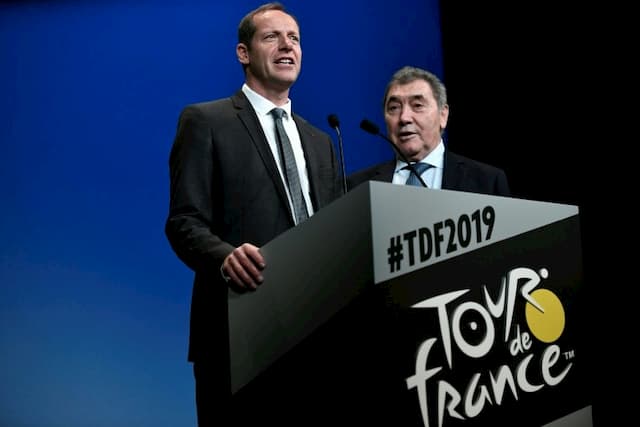The Tour de France riders will start for three weeks of racing on Saturday 6th July 2019, in Brussels (Belgium).
Around the world, it symbolizes the Tour de France. The yellow jersey celebrates in July the hundred years of a legendary and tumultuous story, nourished only by the cult of victory.
The birth in Grenoble
The anniversary will coincide on 19 July, in Pau, with the only time trial of the next edition which will leave at the end of this week in Brussels. A hundred years earlier, the light was stealthily appearing in the Platoon of the Tour, the first organized after the Great War.
Yellow, like the colour of the printing paper of the newspaper organizer L’Auto , the ancestor of L’Equipe . Yellow, to “recognize the leader” following the wish of Henri Desgrange who created the Tour in 1903, sixteen years earlier:
“In the future, the driver in the first place in the general classification will wear a special jersey.”
Eugène Christophe, the hero of Tourmalet, whom he had dismounted on foot to repair his broken fork at the forge in the village of Sainte-Marie-de-Campan in 1913, was the first to wear it in Grenoble. But the “Old Gaul” (then aged 34) will fail to bring him back to Paris. Because of a too long repair in the penultimate stage. The beginning of a series of twists, exploits and theatrics that tell an adventure always renewed.
The tribute to Merckx
A century later, the Tour pays homage to the champion who has worn the habit of excellence most often (97 days, but 111 times if we take into account the half-steps that have been forgotten today). Its director Christian Prudhomme says, “from Brussels, the city of Eddy Merckx, was obvious.” MERCKX, six letters at the top of the pyramid of 266 yellow jerseys, in front of two other five-time winners, Bernard Hinault and Miguel Indurain.
In 2012, Eddy Merckx, the greatest champion in history (and the second to win five times the Tour after the unforgettable Jacques Anquetil), has regained his place. Lance Armstrong, the greatest imposter in history, had dislodged him during the interminable sequence from 1999 to 2005. Before falling definitively after an investigation led-which reversal! -From the accusations of Floyd Landis, also cheat calibre downgraded from his 2006 win for doping.

The sun of their lives
Sometimes soiled, dirty, often honoured, the yellow jersey has sublimated quarries, it has especially embellished existences. “It helps to find unsuspected resources in difficult times,” says Thomas Voeckler, the Frenchman who has worn it most often in the twenty-first century. “It remains for life,” confirms Tony Gallopin, the last Frenchman to be adept. It was in 2014, five years ago, the longest waiting for French cycling to survive outside the war period.
Outside the race, there is a before and after, agree on all who had the happiness to wear it. They came out of obscurity, briefly or definitively, at the beginning (thus, for Thomas Voeckler and Fernando Gaviria during the present decade), in the heart (Vincenzo Nibali, Greg Van Avermaet, Peter Sagan) or in the last part (Mark Cavendish, Geraint Thomas) of their career.
In tune with his time
Injustice sometimes accompanies him. Runners of the importance of Raymond Poulidor once, Nairo Quintana, Thibaut Pinot and Romain Bardet today, have only approached, never endorsed. A constant, just like his adaptation to his time. The old piece of cloth now sticks to new textile technologies, as proof of the high-tech combination planned for the time trials.
The symbol of the Tour marries its time, even in its economic dimension. Since 1948, he has a special sponsor whose name he bears prominently, next to the initials of its creator (Henri Desgrange). After all sorts of firms (aperitif, gas, beer, ice cream …), it has been supported since 1987 by the LCL bank from Crédit Lyonnais.
The only assured to be at the top of the final podium on July 28, in the finishing light of the Champs-Elysees.





